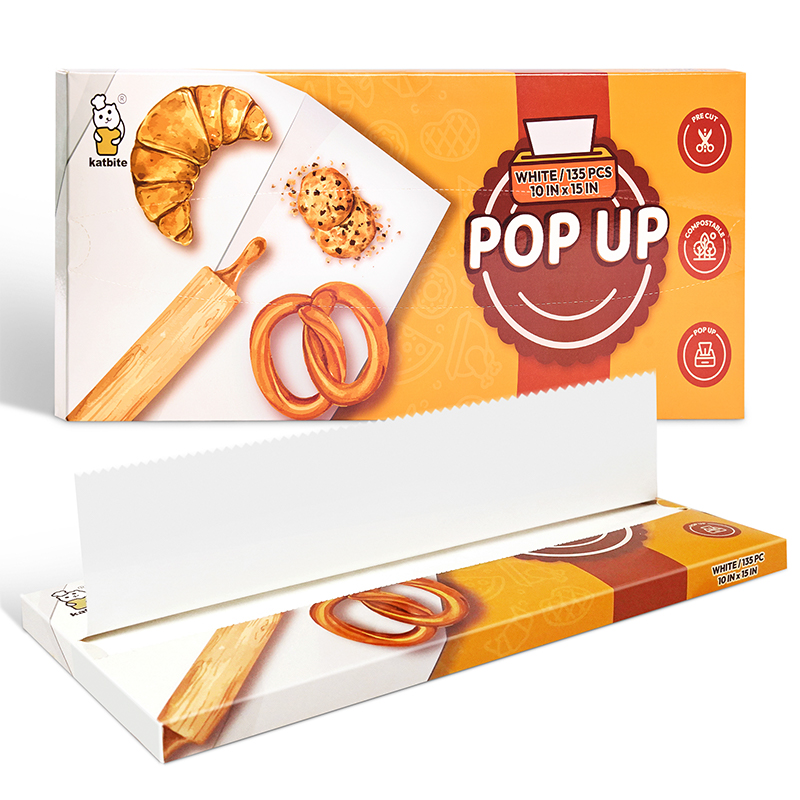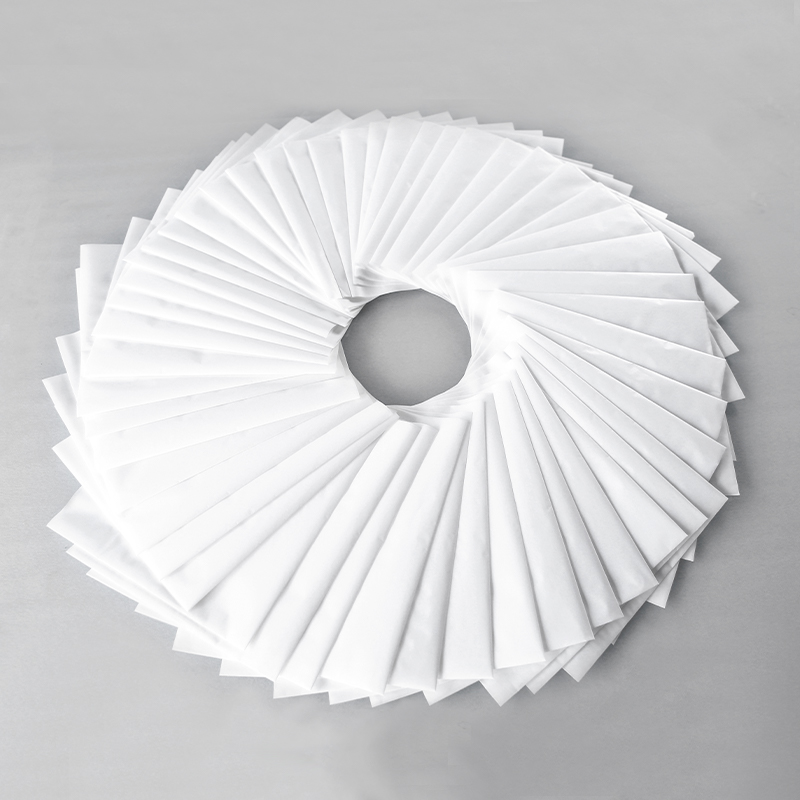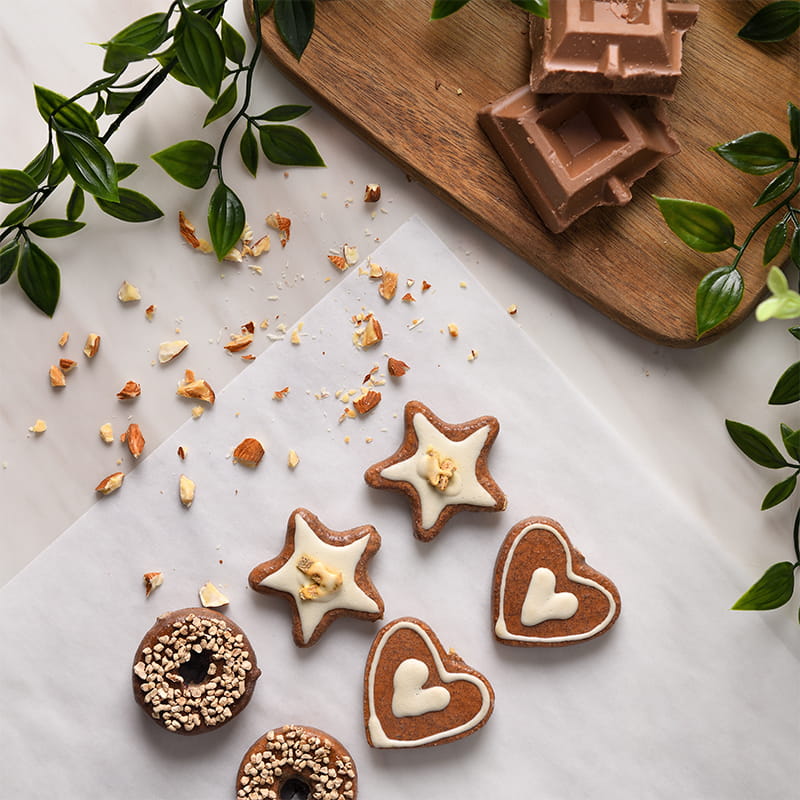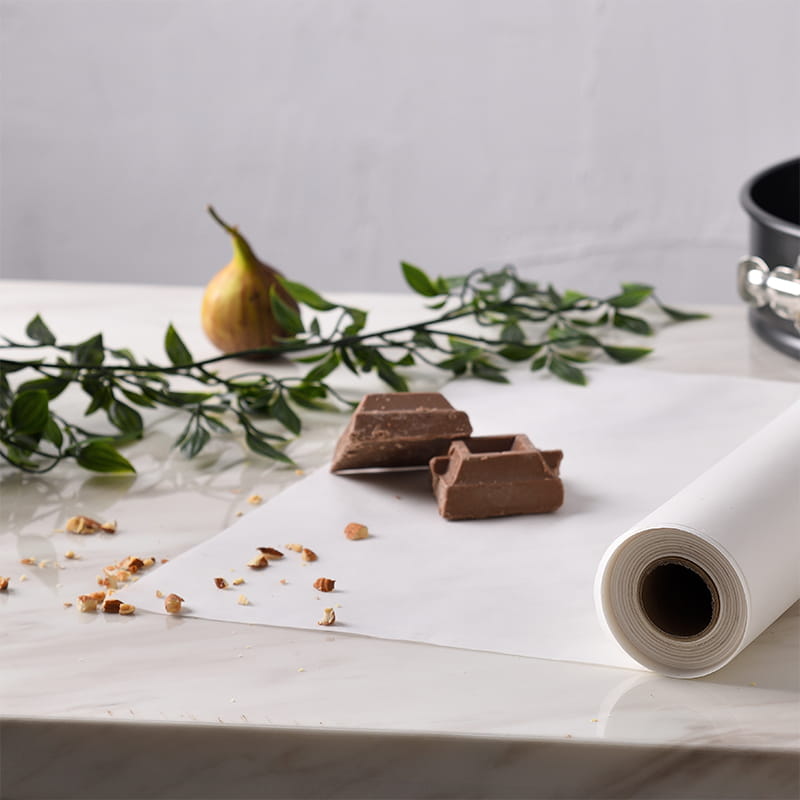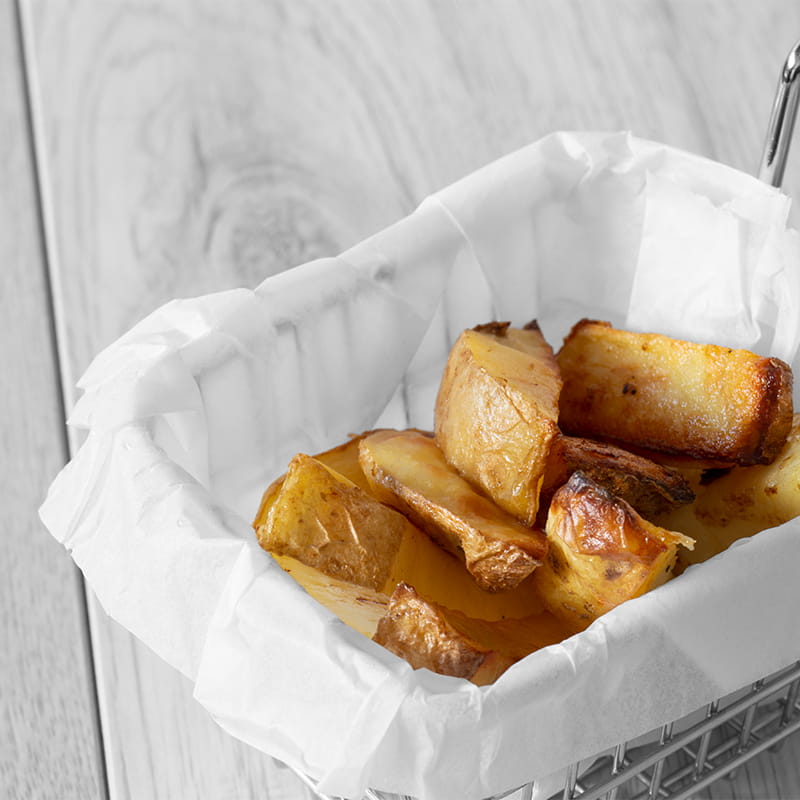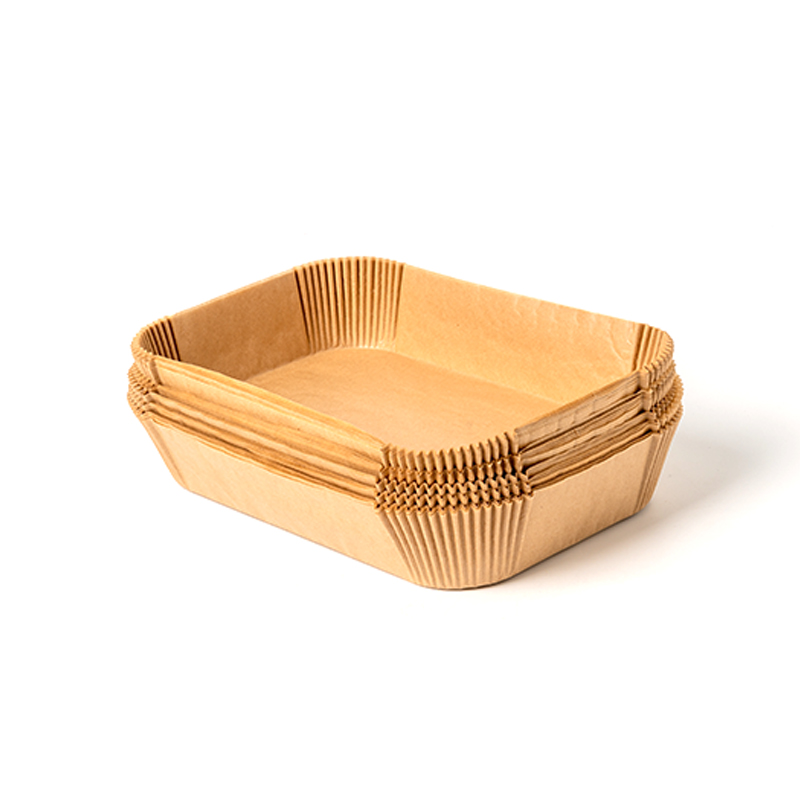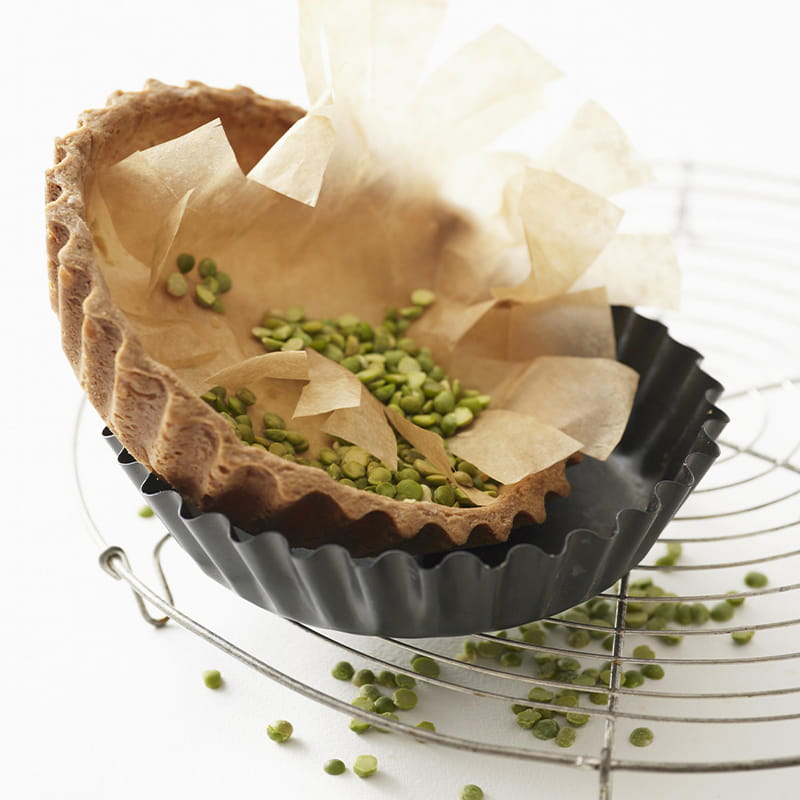Product details: Pop-up parchment paper sheets, an environment-friendly product, are composed of wood pulp and are double-side coated with silicone. Such a coating makes our paper smooth, greasepr...
See DetailsRead through the basic guide of Guanghe baking paper
Parchment paper has quietly revolutionized home baking and cooking, becoming an indispensable tool for professionals and home cooks alike. Its unique properties solve common kitchen frustrations while introducing new culinary possibilities, making it far more than just another disposable kitchen item.
Oven Safety: Understanding the Fundamentals
The primary question more users have is straightforward: Can parchment paper withstand oven temperatures? The answer is a definitive yes – with important qualifications. Parchment paper is specifically engineered for oven use, featuring a specialized silicone coating that creates both a non-stick surface and a robust heat-resistant barrier.
Temperature Considerations: While performance varies slightly between products, quality parchment paper reliably handles temperatures encountered in more baking scenarios. It's crucial to note that all parchment has an upper temperature threshold. Exceeding this limit risks scorching, excessive brittleness, or potentially smoke. Always verify the specific temperature rating indicated on your parchment paper packaging.
Critical Safety Practices:
- Avoid Direct Heat Exposure: Never position parchment paper touching oven heating elements or directly under a broiler. Radiant heat can exceed safe thresholds instantly.
- Preheat Properly: Place parchment in an oven that's already reached the target temperature, avoiding prolonged exposure during preheating cycles.
- Monitor Edges: Keep parchment neatly contained within baking sheets. Overhanging edges near oven walls increase scorch risk.
- Alternative Caution: Understand that wax paper (with its paraffin coating) is fundamentally different and unsuitable for oven use due to melting and flammability risks.
Why Parchment Paper Delivers Unique Value
Beyond oven safety, parchment paper offers multifaceted kitchen advantages:
1.Unparalleled Non-Stick Performance: The silicone coating creates an almost frictionless surface. Cookies slide off effortlessly, cakes release cleanly from pans, and sticky candies or caramel don't bond to the paper. This eliminates the need for greasing pans with butter or oil, reducing fat content in foods and simplifying cleanup dramatically.
2.Consistent Heat Distribution: Parchment promotes even baking by creating a slight insulating layer between the pan and food. This helps prevent common issues like burnt cookie bottoms or unevenly baked pastries.
3.Moisture Management: It acts as a barrier, preventing excessive moisture loss in some applications while allowing just enough steam transmission in others (like bread baking) to promote crisp crusts. This is vital for techniques like "en papillote" (food steamed in folded parchment packets), where it locks in moisture and flavor.
4.Cleanliness and Efficiency: Parchment acts as a protective liner for baking sheets and pans. It catches spills, drips, and baked-on residues. Simply remove the parchment after use, leaving the pan remarkably clean – often requiring only a quick wipe. This saves significant time and effort on scrubbing.
5.Versatility Beyond Baking: Its uses extend far beyond cookies and cakes:
Sheet Pan Dinners: Prevent proteins and vegetables from sticking to the pan while roasting.
Candy & Chocolate Work: Provides the good non-stick surface for tempering chocolate or making brittles and toffees.
Food Prep: Use as a non-stick surface for rolling dough, kneading sticky ingredients, or setting dipped treats.
Freezing: Layer between items like burgers, cookies, or dough portions to prevent sticking during freezing.
Steaming (En Papillote): Create sealed packets for fish, chicken, or vegetables with herbs and aromatics, steaming them perfectly in their own juices within the oven.
Understanding Parchment Paper's Popularity
Several key factors drive its widespread adoption:
Solving Universal Problems: It directly addresses fundamental frustrations: sticking food, messy cleanup, uneven baking, and scorched pans. Its solutions are immediately noticeable.
Reliability and Consistency: It delivers predictable results. Bakers and cooks can trust that cookies will release cleanly and pans will stay cleaner, recipe after recipe.
Time Savings: The drastic reduction in cleanup time is a major incentive in busy home and professional kitchens.
Accessibility: It's readily available, affordable, and requires no special skills to use effectively.
Health Perception: Reducing or eliminating the need for greasing pans with fats or oils appeals to health-conscious cooks.
Safety Considerations: Addressing Common Concerns
Safety is naturally a priority when using any material with food under heat:
1.Non-Toxic Composition: Reputable parchment paper relies on food-grade silicone coatings. Silicone is remarkably stable at typical baking temperatures and doesn't release harmful chemicals under normal use conditions within the specified temperature range. Look for products explicitly labeled as food-safe.
2.Bleached vs. Unbleached: Parchment comes in both bleached (white) and unbleached (brown) varieties.
Bleached: Undergoes a process (often using chlorine or oxygen) for whitening. Reputable manufacturers ensure this process meets food safety standards, leaving no harmful residues. Some consumers prefer unbleached for minimal processing.
Unbleached: Retains its natural brown color. It's often chosen by those seeking a less processed option.
3.Historical Note (Quilon): Older parchment papers sometimes used a coating containing chromium (Quilon). Modern food-grade parchment paper predominantly uses silicone coatings, which are widely regarded as safe for food contact. Checking current product specifications provides reassurance.
4.Signs of Overheating: Observe the parchment during use. Significant darkening, excessive brittleness, charring, or smoking indicates the temperature limit has been exceeded. Remove the food immediately and discard the parchment safely.
5.Manufacturer Guidance: Always follow the specific temperature limits and usage instructions provided by the parchment paper manufacturer. These are based on rigorous testing.
Choosing the Right Tool: Parchment Paper vs. Alternatives
|
Feature |
Parchment Paper |
Silicone Baking Mats |
Aluminum Foil |
Wax Paper |
|
Oven Safe |
Yes, within temp limits |
Yes, high temp tolerance |
Yes |
No (melts/burns) |
|
Non-Stick |
Excellent |
Excellent |
Poor (unless greased) |
Good (cold only) |
|
Cleanup |
Minimal (dispose liner) |
Minimal (wash mat) |
Moderate (can stick/burn on) |
Minimal (dispose) Cold |
|
Heat Distribution |
Good |
Excellent |
Varies (can promote browning) |
Not Applicable |
|
Broiler Safe |
Generally No |
Check specific mat rating |
Yes |
No |
|
Best For |
Baking, roasting, en papillote |
Repeated baking, cookies |
High-heat roasting, covering |
Cold prep, wrapping, crafts |
|
Reusable |
Single-use (typically) |
Yes (many times) |
Sometimes for covering |
Single-use (cold) |
|
Cost Consideration |
Low per sheet |
Higher upfront, cost-effective long-term |
Low per sheet |
Low per sheet |
Fully improve efficiency and sustainability
Correct Sizing: Cut parchment to fit your pan well. Overhanging paper can curl into heating elements; too-small pieces expose pan surfaces.
Avoid Sharp Tools: Cutting directly on parchment can slice through it and damage pans underneath. Use a cutting board.
Grease-Free Zone: Don't grease parchment unless a recipe explicitly instructs it (very rare). Grease defeats its non-stick purpose.
Reuse Potential (Limited): While designed as single-use, lightly used parchment (e.g., for baking a batch of dry cookies) can sometimes be reused for a similar quick task if it's still intact and unstained. Never reuse it if it has held greasy or strongly flavored foods, is torn, or shows any scorching.
Disposal: Used parchment paper generally belongs in the regular trash/landfill waste. Grease-soaked or food-contaminated paper isn't suitable for backyard composting. Some uncoated, unbleached, food-free scraps might compost, but coated parchment typically does not break down effectively in home compost systems. Check local municipal composting rules – industrial facilities sometimes accept it.
Silicone Mat Alternative: For frequent baking, heavy-duty silicone baking mats offer a reusable alternative to parchment, providing similar non-stick benefits while reducing waste over time.
Conclusion: A Kitchen Essential, Used Wisely
Parchment paper earns its place as a modern kitchen staple by providing consistent, reliable solutions to everyday cooking and baking challenges. Its ability to prevent sticking, simplify cleanup, promote even baking, and enable techniques like en papillote makes it incredibly valuable. Crucially, when used within its specified temperature limits and sourced from reputable manufacturers, parchment paper is a safe and effective tool.
Understanding its properties – its heat tolerance thresholds, the safety of its silicone coating, and its distinction from wax paper – allows cooks to harness its benefits confidently. While mindful of its disposable nature and proper disposal methods, parchment paper remains a practical and often indispensable asset for achieving better results with less effort in the kitchen. Its enduring popularity is a testament to its functional utility and the tangible improvements it brings to cooking and baking routines.


 English
English 中文简体
中文简体